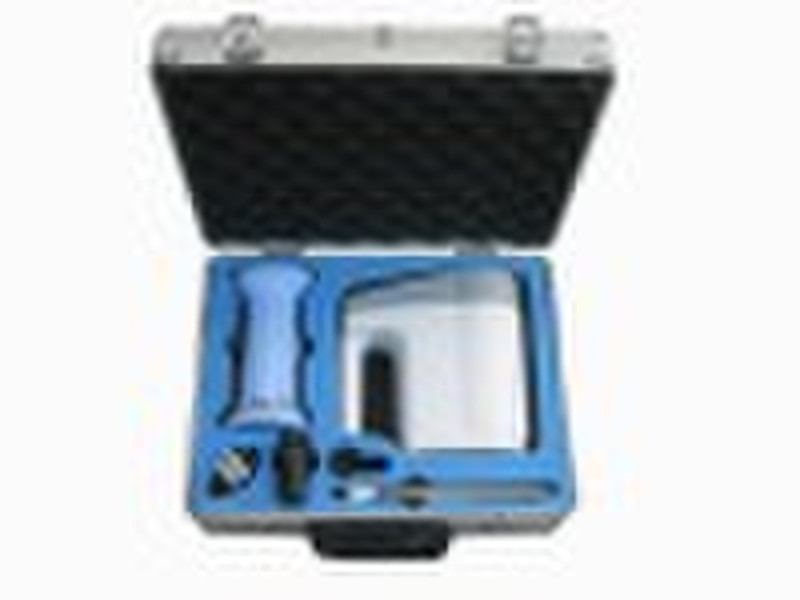grain moisture meter, grain moisture tester, seed
原价: 150,00 USD
杭州市, 中国
生产能力:
50 设置 / 月

Johnny Yiu
联系人姓名
基本信息
| 出生地 | Zhejiang China (Mainland) |
|---|---|
| 牌子的名字 | Reign |
| 模式的数量 | LDS-1H |
grain moisture meter, grain moisture tester, seed moisture mete Because of the zone and species difference and the limitation to the pre-established standard species parameters, it is possible to find the error when using the default parameters defined by the factory. The customer can use following way to calibrate the error and standard to make sure the precision.1) revisory value confirmation: Based on the standard samples by means of 105°C over, the corrective value means the standard value minus the test result. For example, the Tested moisture is 13.6% and the actual moisture needed to display is 14%, so we should add 0.4, and the current revisory value is 0.4. Otherwise it will be the negative value. 2) In revising status: Spill the sample from the instrument, press the species key for long time till flash and then loose it. The red lamp under the low left corner of the display will be bright, and the instrument will display the default revisory value “0.0”. It means that the instrument is now in the revising status; 3) revision: Press the “+” key to add 0.4, then press the OK key to save. The revision is completed when the lamp flashes. Press the species key or switch off to exit. The complete procedure refers to following illustration Standard setup If you want to add the measurable species or you can prepare the standard sample by yourself, you can use following way to set up the standard. 1) Prepare the standard sample: Prepare three kinds of standard samples with high, middle and low moisture by means of 105°C oven (if the actual Test range is less than 6%, it is enough to only use two standard samples with high and low moisture.). In order to make the standard setup representation and veracity , the moisture in the high and low standard sample must be in the two ends of the actual moisture range. The suitable moisture difference among the standard samples is 3-6%. (for examples: the moisture of wheat is 18%, 14% and 10%) 2) Enter into the standard setup: Spill the sample from the instrument, press the “OK” key for long time and loose it when the display flashes. The red lamp under the low left corner of the display will be bright, and the species code is showed on the display. It indicates that the instrument is now in standard setup. 3) Select the species code: Press “ “ or “ “ key to select the species code. 4) Note the setup order: You should follow the following order to set standard: first is the low moisture, next is the high moisture and final is the middle moisture. 5) Set low moisture standard: take low moisture sample and fall them into the sensor. When the test result is displayed, change the Test result (display 11%) into the standard value (10%). Then press “OK” key and loose it till the digits flash. One standard setup is completed. For example: note: one standard setup can be also the approach to calibrate the error. 6) Set high moisture standard: Spill the sample but don’t switch off the instrument. Again take high moisture sample and fall them into the sensor. When the test result is displayed, change the Test result (display 17%) into the standard value (18%). Then press “OK” key and loose it till the digits flash. Two standards setup is completed. 7) Test the standard samples again: Test the standard sample again. If the error is equal or less than 0.5%, it indicates the standard setup is successful. Switch off the instrument to exit the standard setup. If the error is large, it needs to reset the standard setup. 8) The third standard setup: If the gap between the low and high moisture standard sample is too large ( exceed the 6%), the middle moisture standard sample can be used as the third standard setup. The setup approach is the same as it used in high and low moisture standard setup. Appendix: standard sample / code synopses Species nameSpecies codeSpecies nameSpecies codeRound shaped paddyP 1Rapeseeds mealP 11SoybeanP 2Grain forageP 12WheatP 3Sunflower seedsP 13RapeseedP 4Big watermelon seedsP 14MaizeP 5Small watermelon seedsP 15BarleyP 6Carrot seeds P 16Long shaped paddyP 7Black sesame P 17RiceP 8Yellow sesameP 18Soybean mealP 9Cotton seeds P 19PeanutP 10Cotton meal P 20
交货条款及包装
Packaging Detail: set/carton, dimension: 25 x 25 x 40cm, gross weight: 2kg Delivery Detail: 7 days
端口: Shanghai
付款条款
Western Union
-
支付方式
我们接受:









